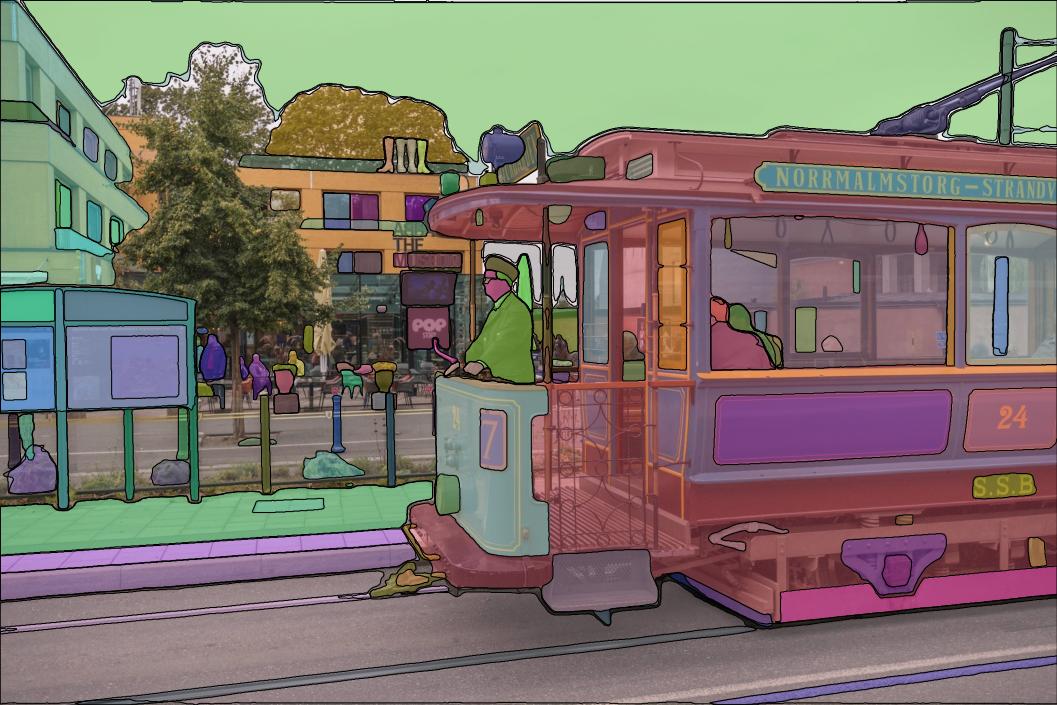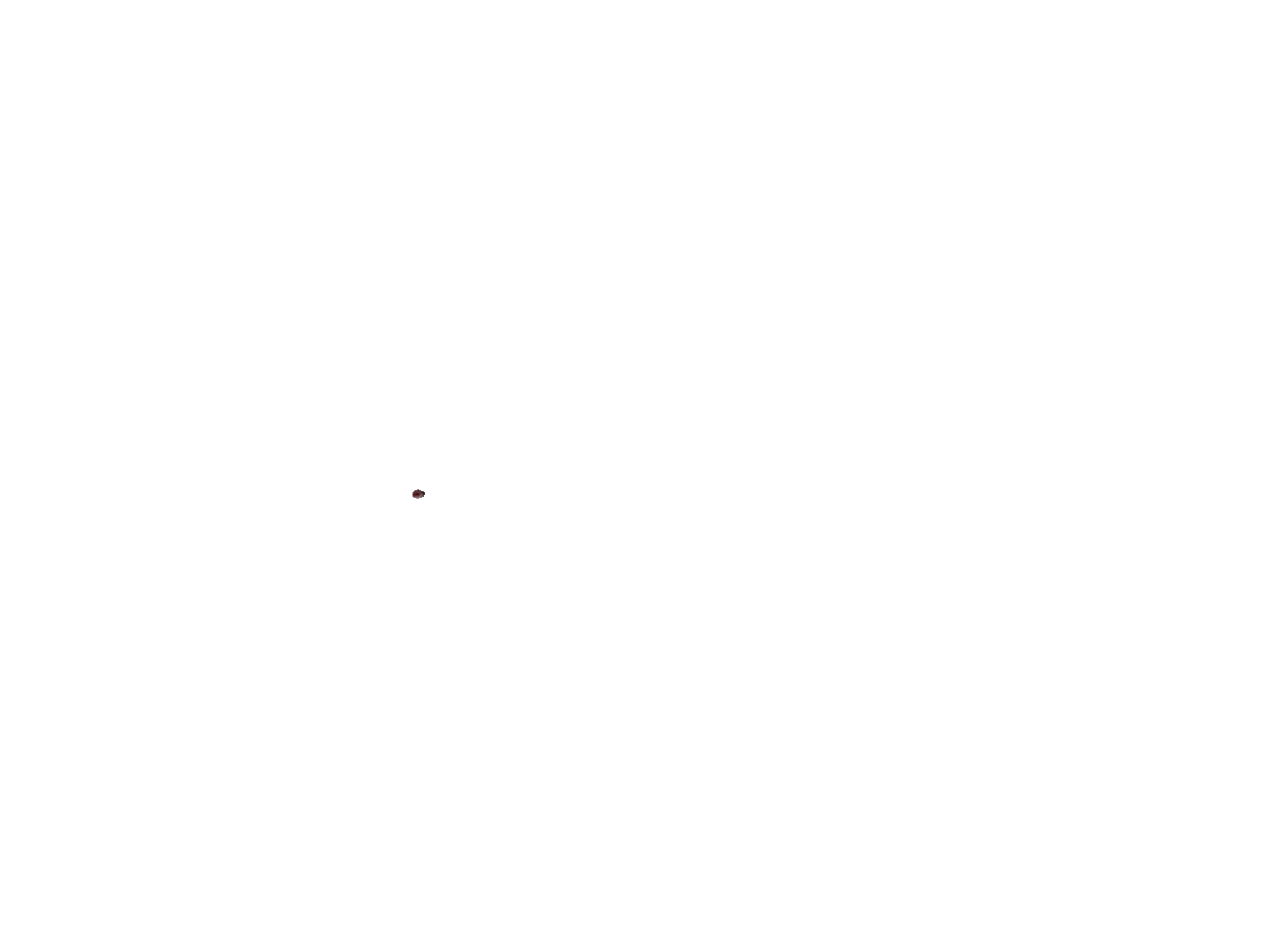segment_anything_model
Maintainer: ayumuakagi

46.1K

| Property | Value |
|---|---|
| Run this model | Run on Replicate |
| API spec | View on Replicate |
| Github link | View on Github |
| Paper link | View on Arxiv |
Create account to get full access
Model overview
The segment_anything_model is a powerful AI model developed by researchers at Meta AI's FAIR team. It is designed to automatically detect and segment objects in an input image, returning their positional and mask information. The model has been trained on a large dataset of 11 million images and 1.1 billion masks, giving it strong zero-shot performance on a variety of segmentation tasks.
The segment_anything_model is part of a family of similar models like segment-anything-automatic, segment-anything-everything, and segment-anything-tryout developed by other researchers and engineers. These models all leverage the powerful Segment Anything architecture to provide advanced object segmentation capabilities.
Model inputs and outputs
Inputs
- image: The image you want the
segment_anything_modelto analyze and segment. - binary_image: A boolean flag to return the segmentation masks as binary images instead of the default format.
- iou_threshold: A threshold value for the Intersection over Union (IoU) metric, used to filter out low-quality segmentation masks.
- area_max_threshold: The maximum area in pixels for a detected object to be included in the output.
- area_min_threshold: The minimum area in pixels for a detected object to be included in the output.
Outputs
- Output: A JSON object containing the segmentation masks and associated metadata for the detected objects in the input image.
Capabilities
The segment_anything_model is highly capable at detecting and segmenting a wide variety of objects in complex scenes. It can handle both small and large objects, and is robust to occlusions, lighting variations, and other challenging conditions. The model's zero-shot performance means it can be applied to new domains and tasks without the need for additional training.
What can I use it for?
The segment_anything_model has a wide range of potential applications, including:
- Content moderation: Automatically detecting and segmenting sensitive or inappropriate objects in user-generated content.
- Robotic perception: Enabling robots to better understand their environment and interact with objects.
- Autonomous driving: Improving object detection and segmentation for self-driving cars.
- Medical imaging: Aiding in the analysis and diagnosis of medical scans by automatically segmenting relevant anatomical structures.
Things to try
One interesting aspect of the segment_anything_model is its ability to generate masks for all objects in an image, not just those specified by a user prompt. This makes it a versatile tool for exploring and understanding the contents of an image in detail. You could try running the model on a variety of images and see what it detects, or even use it as a first step in a larger computer vision pipeline.
Additionally, the model's ONNX export capabilities allow it to be deployed in a wide range of environments, including web browsers. This opens up possibilities for interactive, in-browser demos and applications that leverage the model's segmentation abilities.
This summary was produced with help from an AI and may contain inaccuracies - check out the links to read the original source documents!
Related Models

segment-anything-automatic

3
The segment-anything-automatic model, created by pablodawson, is a version of the Segment Anything Model (SAM) that can automatically generate segmentation masks for all objects in an image. SAM is a powerful AI model developed by Meta AI Research that can produce high-quality object masks from simple input prompts like points or bounding boxes. Similar models include segment-anything-everything and the official segment-anything model. Model inputs and outputs The segment-anything-automatic model takes an image as its input and automatically generates segmentation masks for all objects in the image. The model supports various input parameters to control the mask generation process, such as the resize width, the number of crop layers, the non-maximum suppression thresholds, and more. Inputs image**: The input image to generate segmentation masks for. resize_width**: The width to resize the image to before running inference (default is 1024). crop_n_layers**: The number of layers to run mask prediction on crops of the image (default is 0). box_nms_thresh**: The box IoU cutoff used by non-maximal suppression to filter duplicate masks (default is 0.7). crop_nms_thresh**: The box IoU cutoff used by non-maximal suppression to filter duplicate masks between different crops (default is 0.7). points_per_side**: The number of points to be sampled along one side of the image (default is 32). pred_iou_thresh**: A filtering threshold between 0 and 1 using the model's predicted mask quality (default is 0.88). crop_overlap_ratio**: The degree to which crops overlap (default is 0.3413333333333333). min_mask_region_area**: The minimum area of a mask region to keep after postprocessing (default is 0). stability_score_offset**: The amount to shift the cutoff when calculating the stability score (default is 1). stability_score_thresh**: A filtering threshold between 0 and 1 using the stability of the mask under changes to the cutoff (default is 0.95). crop_n_points_downscale_factor**: The factor to scale down the number of points-per-side sampled in each layer (default is 1). Outputs Output**: A URI to the generated segmentation masks for the input image. Capabilities The segment-anything-automatic model can automatically generate high-quality segmentation masks for all objects in an image, without requiring any manual input prompts. This makes it a powerful tool for tasks like image analysis, object detection, and image editing. The model's strong zero-shot performance allows it to work well on a variety of image types and scenes. What can I use it for? The segment-anything-automatic model can be used for a wide range of applications, including: Image analysis**: Automatically detect and segment all objects in an image for further analysis. Object detection**: Use the generated masks to identify and locate specific objects within an image. Image editing**: Leverage the precise segmentation masks to selectively modify or remove objects in an image. Automation**: Integrate the model into image processing pipelines to automate repetitive segmentation tasks. Things to try Some interesting things to try with the segment-anything-automatic model include: Experiment with the various input parameters to see how they affect the generated masks, and find the optimal settings for your specific use case. Combine the segmentation masks with other computer vision techniques, such as object classification or instance segmentation, to build more advanced image processing applications. Explore using the model for creative applications, such as image compositing or digital artwork, where the precise segmentation capabilities can be valuable. Compare the performance of the segment-anything-automatic model to similar models, such as segment-anything-everything or the official segment-anything model, to find the best fit for your needs.
Updated Invalid Date

segment-anything-everything

67
The segment-anything-everything model, developed by Replicate creator yyjim, is a tryout of Meta's Segment Anything Model (SAM). SAM is a powerful AI model that can produce high-quality object masks from input prompts such as points or boxes, and it can be used to generate masks for all objects in an image. It has been trained on a dataset of 11 million images and 1.1 billion masks, giving it strong zero-shot performance on a variety of segmentation tasks. Similar models include ram-grounded-sam from idea-research, which combines SAM with a strong image tagging model, and the official segment-anything model from ybelkada, which provides detailed instructions on how to download and use the model. Model inputs and outputs The segment-anything-everything model takes an input image and allows you to specify various parameters for mask generation, such as whether to only return the mask (without the original image), the maximum number of masks to return, and different thresholds and settings for the mask prediction and post-processing. Inputs image**: The input image, provided as a URI. mask_only**: A boolean flag to indicate whether to only return the mask (without the original image). mask_limit**: The maximum number of masks to return. If set to -1 or None, all masks will be returned. crop_n_layers**: The number of layers of image crops to run the mask prediction on. Higher values can lead to more accurate masks but take longer to process. box_nms_thresh**: The box IoU cutoff used by non-maximal suppression to filter duplicate masks. crop_nms_thresh**: The box IoU cutoff used by non-maximal suppression to filter duplicate masks between different crops. points_per_side: The number of points to be sampled along one side of the image. The total number of points is points_per_side2. pred_iou_thresh**: A filtering threshold in [0, 1], using the model's predicted mask quality. crop_overlap_ratio**: The degree to which crops overlap, as a fraction of the image length. min_mask_region_area**: The minimum area (in pixels) for disconnected regions and holes in masks to be removed during post-processing. stability_score_offset**: The amount to shift the cutoff when calculating the stability score. stability_score_thresh**: A filtering threshold in [0, 1], using the stability of the mask under changes to the cutoff used to binarize the model's mask predictions. crop_n_points_downscale_factor**: The factor by which the number of points-per-side is scaled down in each subsequent layer of image crops. Outputs An array of URIs representing the generated masks. Capabilities The segment-anything-everything model can generate high-quality segmentation masks for objects in an image, even without explicit labeling or training on the specific objects. It can be used to segment a wide variety of objects, from household items to natural scenes, by providing simple input prompts such as points or bounding boxes. What can I use it for? The segment-anything-everything model can be useful for a variety of computer vision and image processing applications, such as: Object detection and segmentation**: Automatically identify and segment objects of interest in images or videos. Image editing and manipulation**: Easily select and extract specific objects from an image for further editing or compositing. Augmented reality**: Accurately segment objects in real-time for AR applications, such as virtual try-on or object occlusion. Robotics and autonomous systems**: Segment objects in the environment to aid in navigation, object manipulation, and scene understanding. Things to try One interesting thing to try with the segment-anything-everything model is to experiment with the various input parameters, such as the number of image crops, the point sampling density, and the different threshold settings. Adjusting these parameters can help you find the right balance between mask quality, processing time, and the specific needs of your application. Another idea is to try using the model in combination with other computer vision techniques, such as object detection or instance segmentation, to create more sophisticated pipelines for complex image analysis tasks. The model's zero-shot capabilities can be a powerful addition to a wider range of computer vision tools and workflows.
Updated Invalid Date

segment-anything-tryout

2
segment-anything-tryout is a tryout version of the Segment Anything Model (SAM) developed by Meta AI Research. SAM is a powerful image segmentation model that can generate high-quality object masks from input prompts like points or bounding boxes. It has been trained on a massive dataset of 11 million images and 1.1 billion masks, giving it strong zero-shot performance across a variety of segmentation tasks. Similar models like segment-anything-everything and ram-grounded-sam also utilize the SAM approach, demonstrating its broad applicability. The official segment-anything model provides even more details and usage instructions. Model inputs and outputs segment-anything-tryout takes two primary inputs: an image and an optional set of prompts such as points or bounding boxes. The model then outputs a set of segmentation masks corresponding to the objects in the image. Inputs image**: The input image to generate masks for box**: Bounding box coordinates [x, y, w, h] to use as a prompt. If not provided, the entire image will be used. mask_only**: If True, the output will only include the mask(s), without any additional metadata. multimask_output**: If True, the output will be a list of masks. If False, the output will be a single mask. Outputs Output**: An array of URIs pointing to the generated segmentation mask(s) for the input image. Capabilities The Segment Anything Model (SAM) has impressive zero-shot capabilities, allowing it to generate accurate segmentation masks without any fine-tuning or additional training. It can handle a variety of object types and scenes, as demonstrated by the example outputs on the project website. This makes SAM a highly versatile tool for image understanding and analysis tasks. What can I use it for? segment-anything-tryout and the full SAM model can be used for a wide range of computer vision applications that require accurate object segmentation. Some potential use cases include: Automating photo/image editing tasks by allowing users to easily select and manipulate specific objects Improving image search and retrieval by enabling more fine-grained queries Supporting robotic and autonomous systems that need to understand their surroundings The model's zero-shot capabilities also make it well-suited for rapidly prototyping and exploring new computer vision applications without the need for extensive dataset collection and model training. Things to try One interesting aspect of SAM is its ability to generate masks from a variety of input prompts, not just bounding boxes. Try experimenting with different types of prompts, such as clicking on specific points of interest or drawing rough outlines around objects. This can help you understand the model's flexibility and discover new ways to leverage its segmentation capabilities. Another avenue to explore is the model's performance on different types of images and scenes. While the examples showcase its ability to handle common objects, you could try challenging it with more complex or unusual imagery to see how it responds. This can help uncover the model's strengths and limitations.
Updated Invalid Date

segmentanything

1
The segmentanything model, created by maintainer leandroamaral, is a powerful AI model that can segment anything in an image. It is similar to other models like segment-anything-automatic, segment_anything_model, segment-anything-everything, and sam-2, all of which focus on object segmentation in images. Model inputs and outputs The segmentanything model takes in an image and various input parameters to control the segmentation process. These include an IoU (Intersection over Union) threshold for filtering annotations, an object confidence threshold, options for drawing high-resolution masks and contours, and prompts for bounding boxes, text, and points. The model then outputs a URI for the segmented image. Inputs Image**: The input image Iou**: The IoU threshold for filtering annotations Conf**: The object confidence threshold Retina**: Whether to draw high-resolution segmentation masks Box Prompt**: The bounding box prompt in the format [x,y,w,h] Model Name**: The model to use, with the default being FastSAM-x Point Label**: The point label in the format [0] (0 for background, 1 for foreground) Text Prompt**: The text prompt to use, e.g., "a black dog" Point Prompt**: The point prompt in the format [[x1,y1],[x2,y2]] Withcontours**: Whether to draw the edges of the masks Better Quality**: Whether to use better quality segmentation with morphologyEx Outputs Output**: A URI for the segmented image Capabilities The segmentanything model can accurately segment any object in an image, regardless of its size, shape, or location. It can handle a wide variety of objects, from small household items to large animals or buildings. The model's advanced segmentation capabilities make it useful for a range of applications, such as image editing, object detection, and scene understanding. What can I use it for? The segmentanything model can be used in a variety of applications, such as: Image Editing**: Easily remove or isolate objects from images for editing or compositing purposes. Object Detection**: Automatically detect and segment objects of interest in images for further analysis or processing. Scene Understanding**: Gain a deeper understanding of the contents of an image by segmenting and analyzing the various elements within it. Augmented Reality**: Use the model's segmentation capabilities to overlay digital content on real-world objects in AR applications. Things to try One interesting thing to try with the segmentanything model is to experiment with the various input prompts and parameters to see how they affect the segmentation results. For example, you could try using different text prompts or point prompts to see how the model responds. You could also try adjusting the IoU and confidence thresholds to find the right balance between accuracy and speed. Another interesting thing to try is to use the model in combination with other computer vision techniques, such as object detection or semantic segmentation, to create more complex and powerful applications. By integrating the segmentanything model with other AI models, you can unlock new possibilities for image understanding and manipulation.
Updated Invalid Date